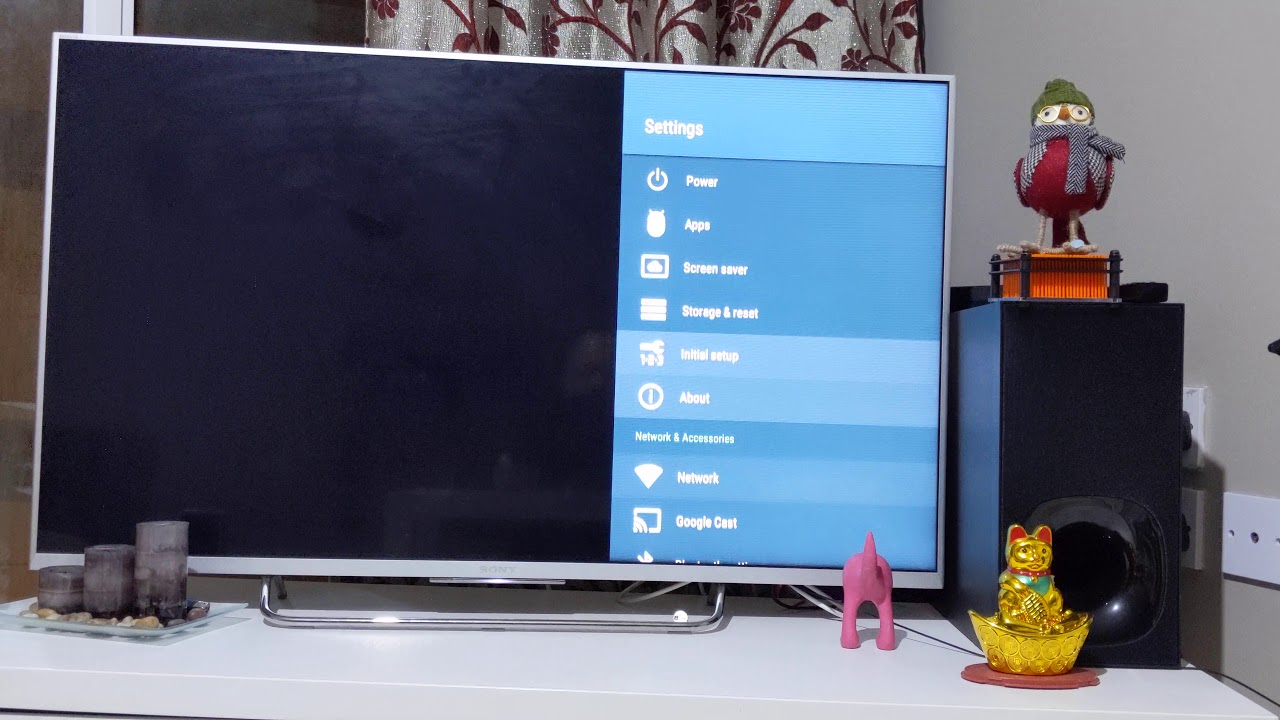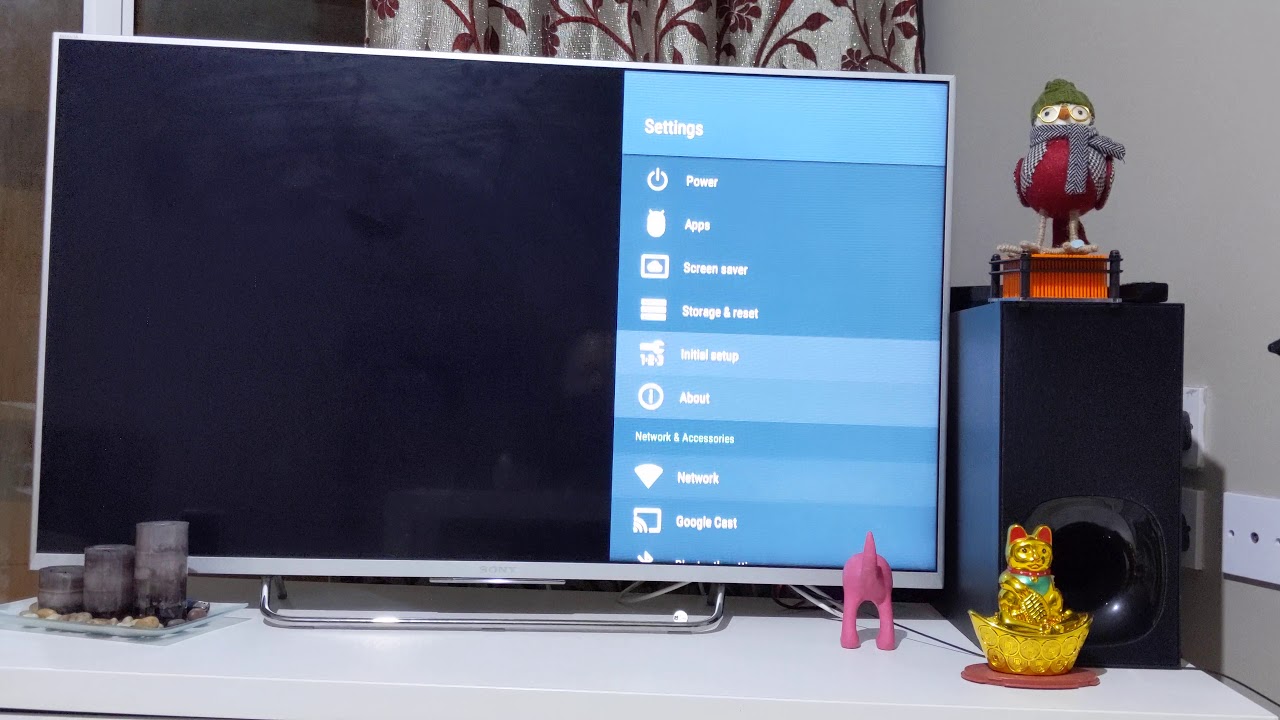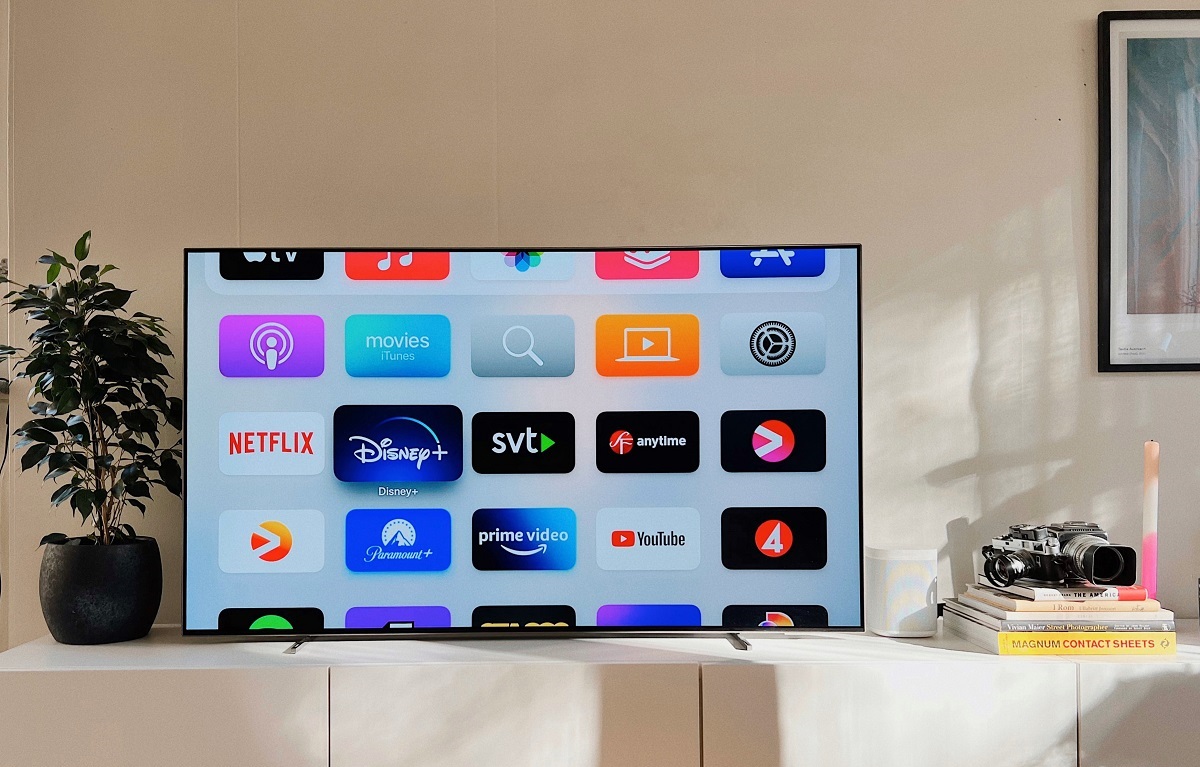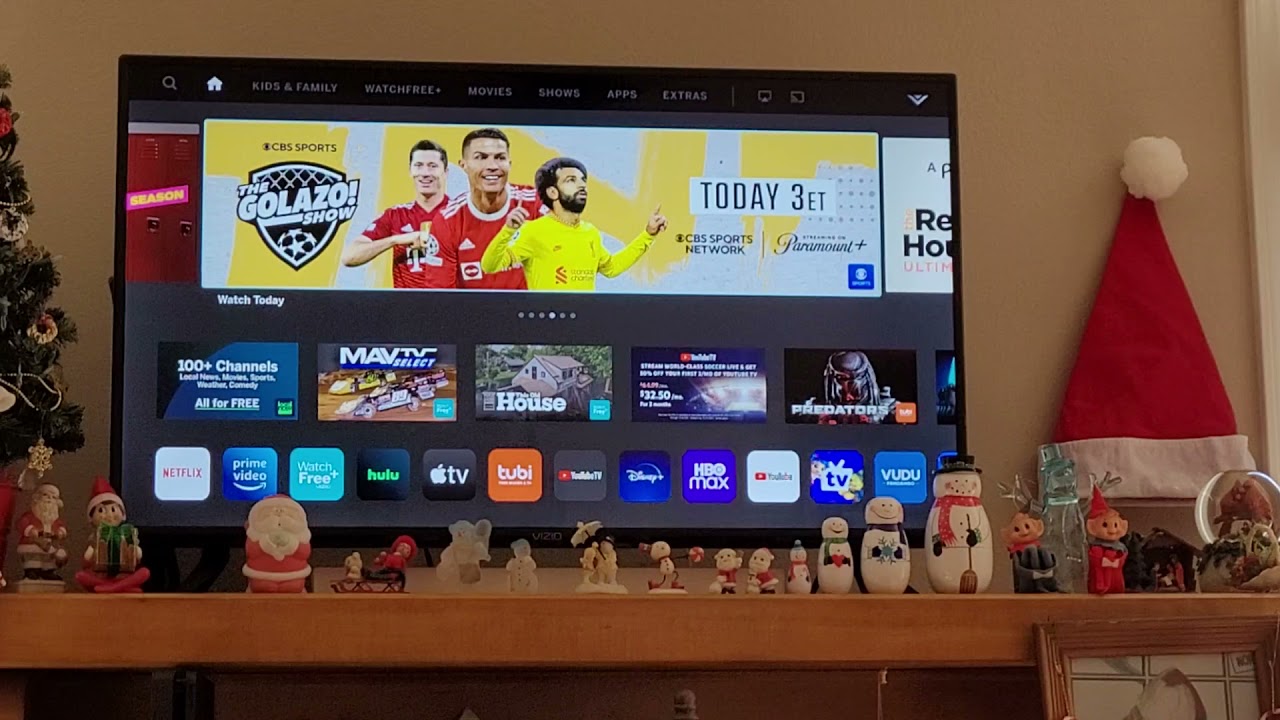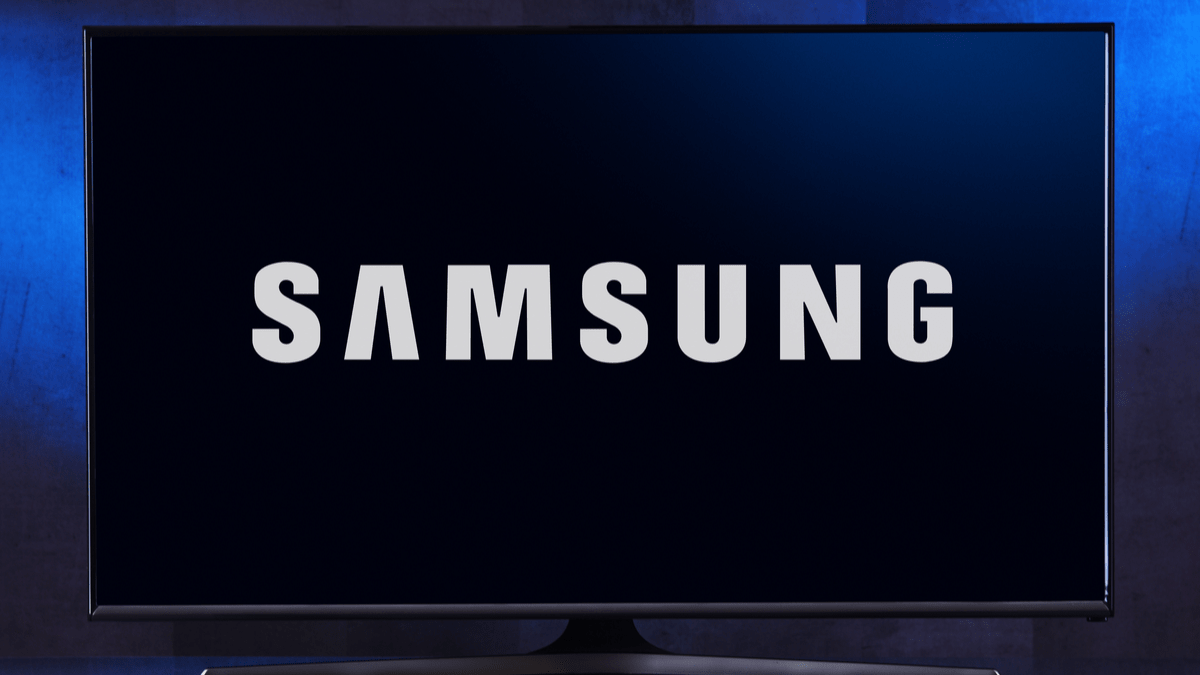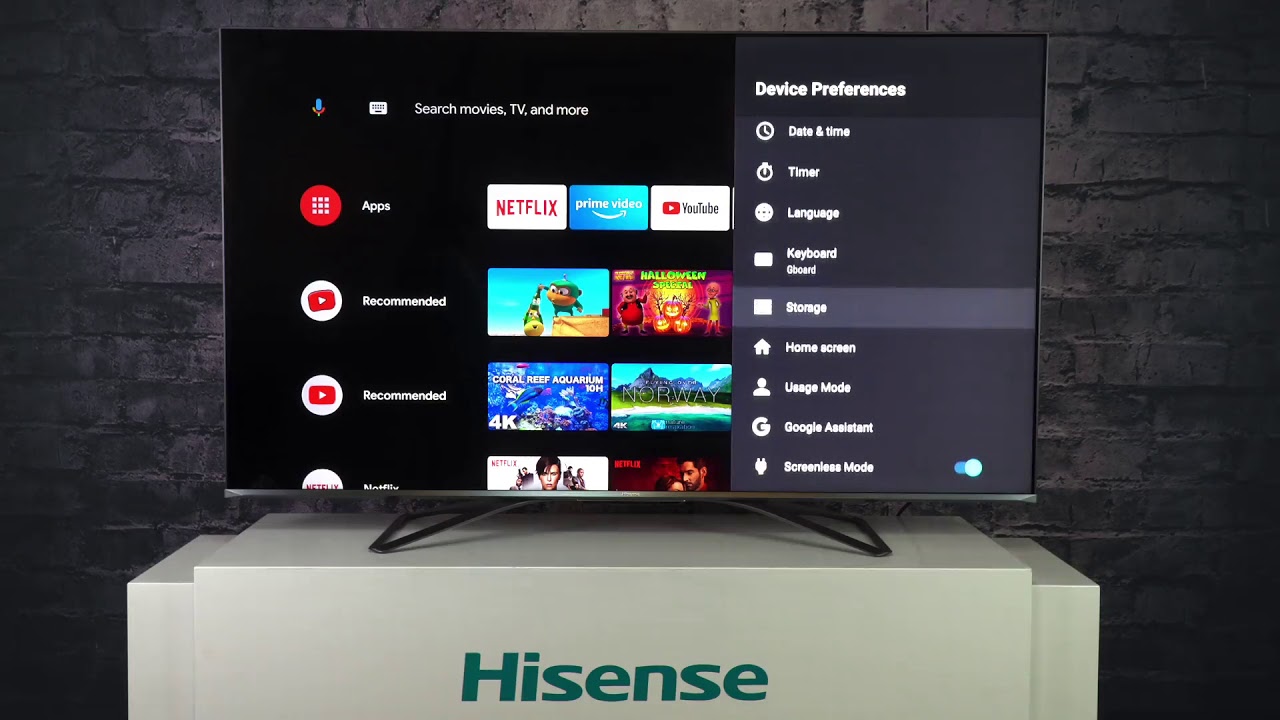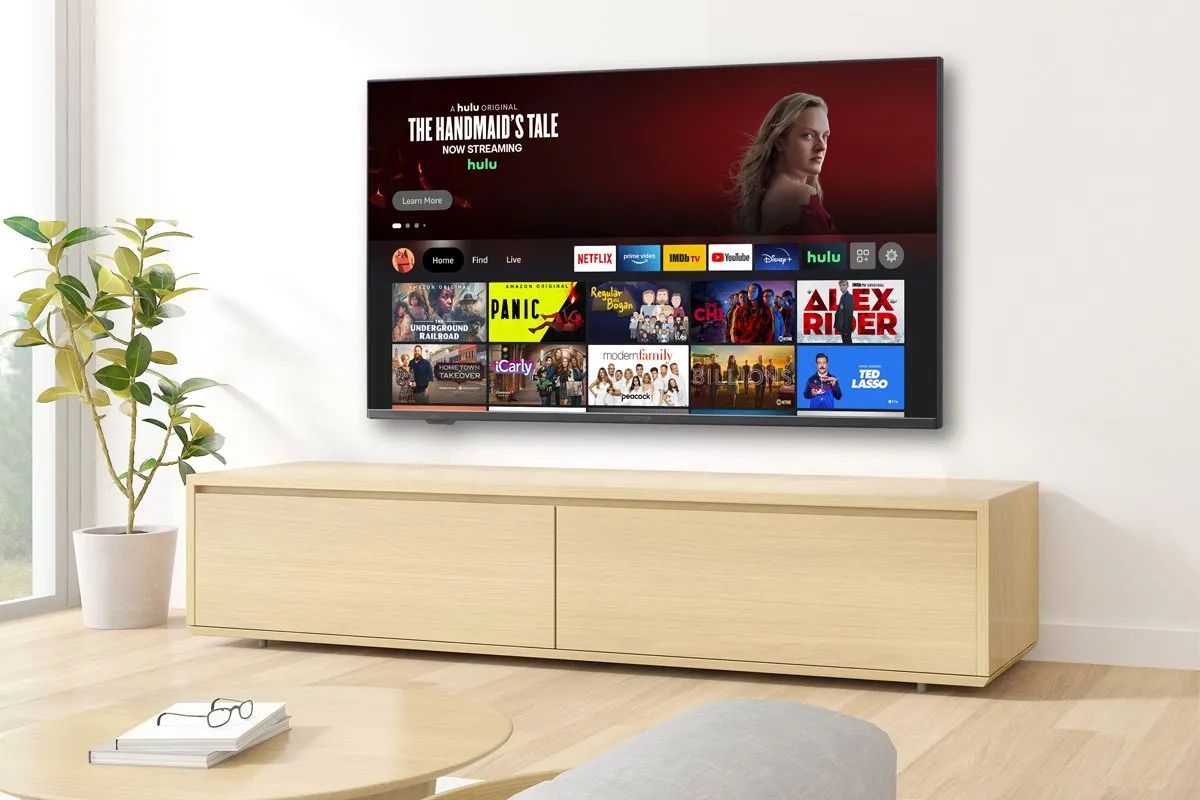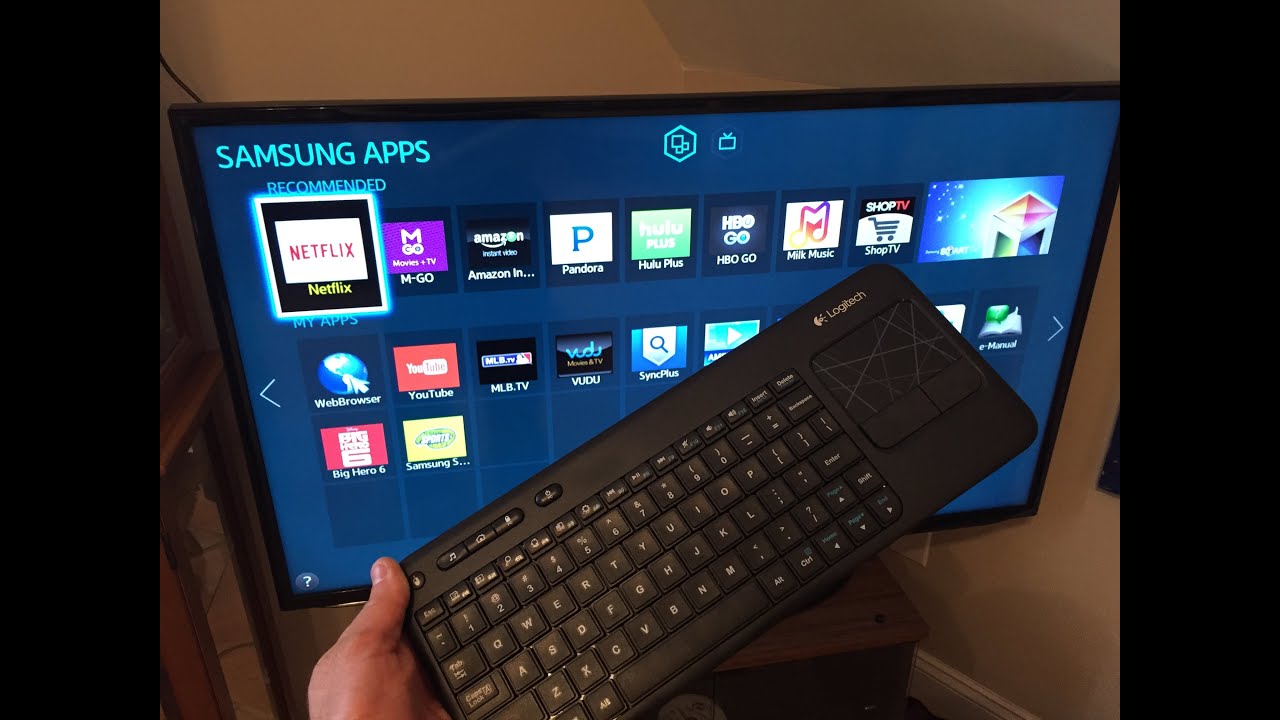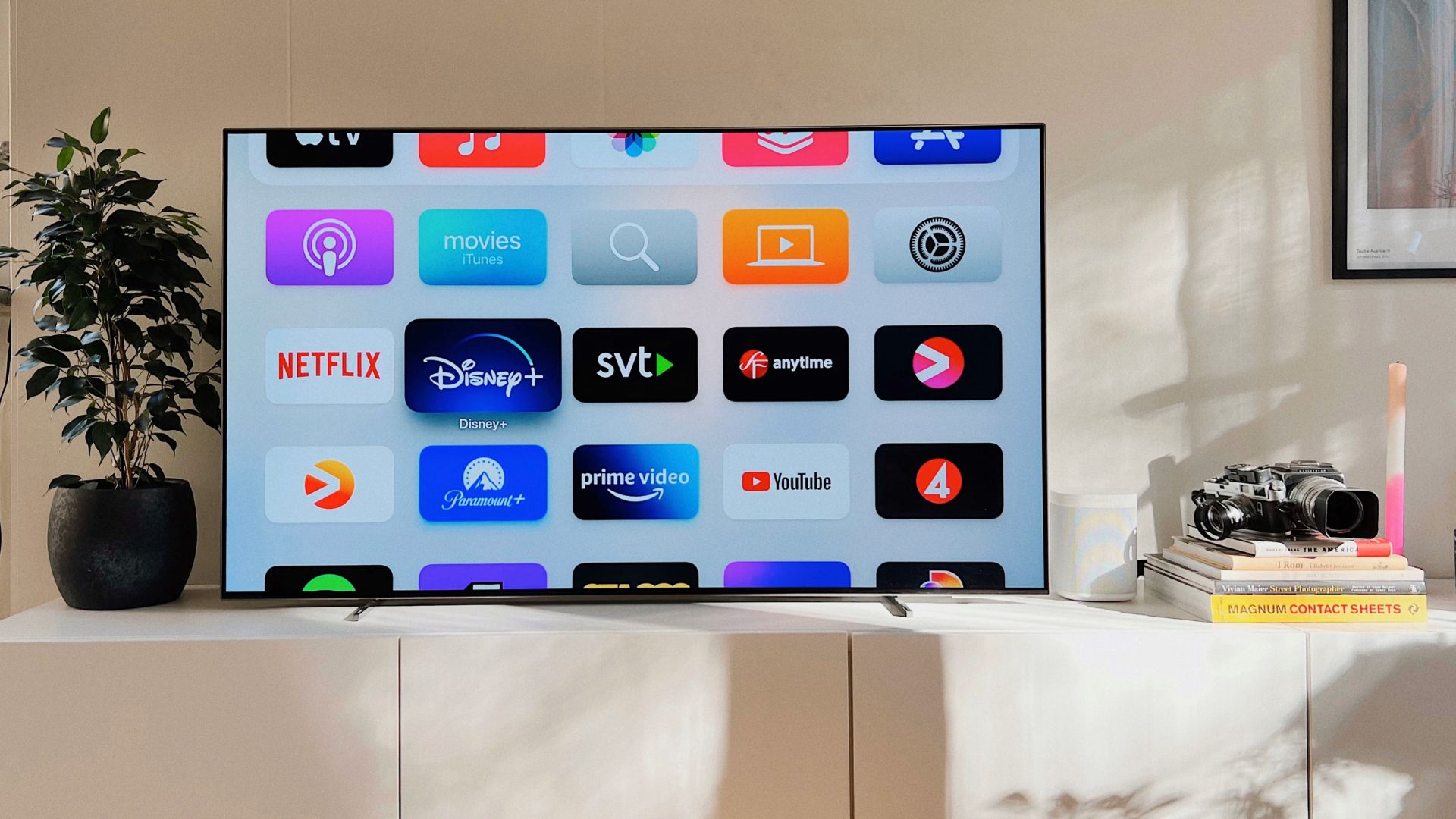Introduction
Welcome to the world of smart TVs, where entertainment is just a few clicks away. With their advanced features and internet connectivity, smart TVs have revolutionized the way we watch our favorite shows, movies, and videos. However, over time, you may notice that your smart TV starts to slow down, making your viewing experience less enjoyable. Don’t worry, though – there are several steps you can take to make your smart TV faster and improve its performance.
A slow smart TV can be frustrating, causing buffering issues, laggy navigation, and delayed response times. Fortunately, there are various methods to optimize your smart TV’s speed and ensure smooth operation. In this article, we will explore some effective techniques to help you speed up your smart TV and enhance your overall viewing experience.
From updating your TV’s software to adjusting picture settings, we will delve into the different strategies you can implement to make your smart TV faster. By following these suggestions, you’ll be able to enjoy seamless streaming, quick app loading, and smoother navigation on your smart TV.
So, if you’re tired of waiting for your smart TV to respond or experiencing frustrating delays, let’s dive into the tips and tricks that will help you maximize its speed and performance.
Update Your Smart TV’s Software
One of the first steps you should take to make your smart TV faster is to ensure that you have the latest software installed. Manufacturers regularly release firmware updates that include performance enhancements and bug fixes. Updating your smart TV’s software can significantly improve its speed and overall functionality.
To update your smart TV’s software, follow these simple steps:
- Go to the settings menu on your smart TV. The location of the settings menu may vary depending on the brand and model of your TV, but it is usually accessible through a dedicated button on your remote or through an on-screen menu.
- Look for the ‘Software Update’ or ‘System Update’ option. Again, the name may differ depending on your TV’s manufacturer.
- Select the ‘Update Now’ or ‘Check for Updates’ option. Your TV will then check for the latest updates available.
- If a new update is found, follow the on-screen prompts to download and install it. Make sure you have a stable internet connection during the process.
Once the update is complete, your smart TV will restart with the latest software version. This update can bring performance improvements, optimize system resources, and fix any known issues that may be slowing down your TV.
It’s worth mentioning that some smart TVs have an automatic update feature enabled by default. This means your TV will automatically check for and install updates when connected to the internet. However, it’s always a good idea to manually check for updates to ensure you have the latest software.
Updating your smart TV’s software should be a regular maintenance task to keep it running smoothly. By staying up to date, you’ll not only experience a faster TV but also take advantage of new features and security patches that the updates provide.
Use an Ethernet Connection Instead of Wi-Fi
Wi-Fi is undoubtedly convenient, allowing you to wirelessly connect your smart TV to the internet. However, if you’re experiencing sluggish performance, consider switching to an Ethernet connection for a faster and more stable internet connection.
While Wi-Fi connections are susceptible to interference from other devices and obstacles, an Ethernet connection uses a physical cable that directly connects your smart TV to your modem or router. This direct connection can provide a more reliable and consistent internet connection, resulting in improved speed and reduced buffering.
To switch to an Ethernet connection, follow these steps:
- Locate the Ethernet port on the back of your smart TV. It is usually labeled as “LAN” or “Ethernet”.
- Connect one end of an Ethernet cable to the Ethernet port on your smart TV.
- Connect the other end of the Ethernet cable to an available Ethernet port on your modem or router.
- Once the cable is securely connected, your smart TV should automatically detect the Ethernet connection. If not, you may need to go to the network settings on your TV and manually select the Ethernet option.
By using an Ethernet connection, you eliminate the potential interference and signal fluctuations that can occur with Wi-Fi. This can result in faster download and streaming speeds, reduced latency, and a more responsive smart TV experience.
Keep in mind that running an Ethernet cable from your router to your TV may not always be feasible, especially if they are located in different rooms. In such cases, you can consider using powerline adapters, which use your home’s electrical wiring to transmit the internet signal. These adapters provide a wired connection through your electrical outlets, offering a similar stable connection as an Ethernet cable.
Ultimately, switching to a wired Ethernet connection can be a game-changer for your smart TV’s performance, especially if you frequently stream high-definition content or play online games. The reliability and speed of an Ethernet connection can significantly enhance your viewing experience.
Close Background Applications and Processes
If your smart TV is running slow, it could be due to multiple apps and processes running in the background, consuming valuable system resources. By closing unnecessary applications and processes, you can free up memory and improve your TV’s performance.
Here’s how you can close background applications and processes:
- Press the Home button on your smart TV remote to access the home screen or menu.
- Navigate to the multitasking or app switcher screen. This is usually accessed by pressing a dedicated button or a combination of buttons on the remote.
- On the multitasking screen, you’ll see a list of recently opened apps and processes. Use the arrow or navigation buttons on your remote to select an app or process that you want to close.
- Once the app or process is highlighted, press the ‘Close’, ‘X’, or ‘Back’ button on your remote to exit or close it.
- Repeat this process for any other apps or processes that you want to close.
Closing unnecessary background applications and processes can free up system resources, including memory (RAM) and CPU usage. This can lead to smoother performance and faster response times when navigating through your smart TV’s interface and using various applications.
Additionally, some smart TVs also have an option to clear all open apps with a single button press. Check the user manual or the settings menu of your TV for this feature. Clearing all open apps can be an efficient way to ensure that no unnecessary processes are running in the background.
It’s important to note that some smart TVs automatically manage background processes and close apps when they are not in use. However, occasionally there might be apps or processes that are stuck or not closing properly. In such cases, manually closing them can help optimize your TV’s performance.
By regularly closing background applications and processes, you can ensure that your smart TV has ample resources available to provide a seamless viewing experience.
Clear Cache and Data from Apps
Over time, the cache and data accumulated by the apps on your smart TV can take up significant storage space and slow down the system. Clearing the cache and data from apps can help improve the performance and free up valuable storage on your smart TV.
Here’s how you can clear the cache and data from apps:
- Access the settings menu on your smart TV. This is usually done by pressing the Home or Menu button on your remote.
- Navigate to the Apps or Applications section in the settings menu.
- Scroll through the list of installed apps and select the one you want to clear the cache and data for.
- Once you’ve selected the app, you’ll see options such as Storage, Clear Data, and Clear Cache. Choose the appropriate option to clear the cache and data for that app.
- Confirm your selection and wait for the process to complete.
- Repeat these steps for other apps that you want to clear the cache and data for.
Clearing the cache removes temporary files and data that are stored by apps to speed up their performance. This can include images, videos, and other temporary files. By clearing the cache, you ensure that the app starts fresh, potentially resulting in faster loading times and smoother operation.
Clearing the data, on the other hand, removes all app-related data, including your login information, preferences, and saved settings. This can be useful if an app is malfunctioning, and clearing the data can help resolve any issues. However, keep in mind that clearing the data will reset the app to its default settings, and you may need to reconfigure it after clearing the data.
It’s important to note that clearing the cache and data from apps is a safe process and will not cause any data loss on your smart TV. However, you may need to log back into some apps or reset certain preferences.
By regularly clearing the cache and data from apps, you can optimize the performance of your smart TV and ensure that it remains responsive and efficient.
Disable or Remove Unnecessary Apps
Smart TVs often come preloaded with a variety of apps and services, but not all of them are essential or relevant to your viewing needs. Disabling or removing unnecessary apps can help improve your smart TV’s performance by freeing up storage space and reducing background processes.
Here’s how you can disable or remove unnecessary apps:
- Access the settings menu on your smart TV.
- Navigate to the Apps or Applications section.
- Select the app you want to disable or remove.
- Depending on your TV’s model and software, you can either choose to disable the app, which prevents it from running in the background and frees up system resources, or uninstall the app completely, which removes it from your TV.
- If you choose to uninstall the app, confirm your selection and wait for the process to complete.
- Repeat these steps for other unnecessary apps that you want to disable or remove.
Disabling or removing unnecessary apps not only declutters your smart TV’s interface but also reduces the number of background processes and frees up storage space. This can result in improved performance, faster boot times, and smoother operation.
When deciding which apps to disable or remove, consider the ones that you rarely use or have no interest in. Some pre-installed apps may be beneficial, such as streaming services or media players, while others may not serve any purpose for you. Disabling or removing these unnecessary apps can help streamline your smart TV experience.
It’s important to note that while you can disable or remove some pre-installed apps, certain system apps may be restricted from modification. These apps are usually necessary for the proper functioning of your smart TV. Exercise caution when disabling or removing apps to avoid any unintended consequences.
By disabling or removing unnecessary apps, you can optimize your smart TV’s performance, reduce clutter, and ensure that the resources of your TV are dedicated to the apps and services you actually use.
Adjust Picture Settings for Performance
While smart TVs offer a plethora of picture settings to enhance your viewing experience, some settings may contribute to slower performance. By adjusting certain picture settings, you can optimize your smart TV for better performance without compromising on visual quality.
Here are some key picture settings to consider for improved performance:
- Brightness: Lowering the brightness level can reduce the strain on your TV’s backlighting system and improve overall performance.
- Contrast: Adjusting the contrast level can help strike a balance between picture quality and performance. Experiment with different levels to find the optimum setting that suits your preferences.
- Sharpness: While sharpness can enhance image detail, an excessively high sharpness setting can increase processing requirements. Opt for a moderate or balanced setting to maintain good image quality while reducing the strain on your TV’s processor.
- Color Saturation: Consider reducing the color saturation level to lessen the processing load on your TV. This adjustment may result in more accurate and natural-looking colors, while also improving overall performance.
- Motion Enhancement: Features like motion interpolation or motion smoothing may improve the fluidity of fast-moving scenes but can be resource-intensive. Disable or reduce these settings if you experience lag or performance issues.
Additionally, it’s worth noting that some smart TVs come with pre-configured picture modes, such as ‘Cinema’, ‘Game’, or ‘Vivid’. These modes are designed to optimize picture settings based on specific content types. However, certain modes, such as the ‘Vivid’ mode, tend to prioritize image vibrancy over performance. Consider switching to a more balanced or energy-saving picture mode to improve your TV’s performance.
Experimenting with different picture settings and finding the right balance between performance and picture quality is crucial. It’s important to remember that personal preferences for picture quality may vary, so adjust the settings according to your own viewing preferences.
By tweaking and fine-tuning the picture settings on your smart TV, you can achieve the best balance between performance and visual quality, ensuring a smoother and more enjoyable viewing experience.
Use an External Streaming Device
If you’re still experiencing performance issues with your smart TV, even after trying various optimizations, using an external streaming device can be a game-changer. These devices, such as streaming sticks or set-top boxes, provide a dedicated platform for streaming services and can significantly improve the performance and functionality of your TV.
Here are some benefits of using an external streaming device:
- Processor Power: External streaming devices often come equipped with more powerful processors compared to built-in smart TV platforms. This extra processing power can handle streaming tasks more efficiently, resulting in smoother playback and faster navigation.
- Software Updates: Streaming devices receive regular software updates, ensuring that you have access to the latest features and improvements. These updates can boost performance and compatibility with various streaming services.
- Expanded App Support: While smart TVs have their own app stores, external streaming devices usually offer a wider selection of popular streaming apps. This means you can access a larger variety of content and services that may not be available on your TV’s built-in platform.
- Easy Setup and Navigation: External streaming devices are designed to provide a user-friendly and cohesive streaming experience. They often have intuitive interfaces, voice control features, and better remote controls for seamless navigation.
- Future-Proofing: Investing in an external streaming device ensures that you can take advantage of new technologies and streaming standards as they emerge. This flexibility helps future-proof your entertainment setup even if your smart TV’s platform becomes obsolete over time.
To use an external streaming device, simply connect it to an available HDMI port on your smart TV and follow the device’s setup instructions. Once connected, you can use the streaming device’s interface to access your favorite streaming apps, browse content, and enjoy a smoother and more enhanced streaming experience.
While external streaming devices come at an additional cost, their benefits in terms of performance, app selection, and ease of use make them a worthwhile investment for those seeking an optimal streaming experience.
Restart Your Smart TV Regularly
One simple yet effective step to improve the performance of your smart TV is to restart it regularly. Restarting your TV can help clear temporary files, free up system resources, and resolve minor software glitches that may be impacting its performance.
Here are a few reasons why you should make a habit of restarting your smart TV:
- Clearing Temporary Files: Like any electronic device, smart TVs accumulate temporary files and data over time. Restarting your TV clears these files, allowing it to start fresh and potentially improve its speed and responsiveness.
- Freeing Up System Resources: Continuous use of apps and background processes can gradually consume system resources, such as memory (RAM) and CPU usage. By restarting your TV, you release these resources, giving your TV a clean slate and boosting its overall performance.
- Refreshing System Software: Restarting your TV ensures that the system software starts up again from scratch. This can help resolve any software issues, bugs, or glitches that may be causing performance problems.
- Optimizing App Performance: Many smart TVs have apps that run in the background, even when not actively used. Restarting your TV shuts down these apps completely, allowing them to relaunch and potentially work more efficiently the next time you use them.
- On-demand Updates: Restarting your smart TV can prompt it to check for and install any pending software updates. These updates often include performance enhancements and bug fixes that can further improve your TV’s overall speed and functionality.
It’s recommended to restart your smart TV at least once a week or whenever you notice a decline in performance. To restart your TV, simply go to the settings menu and look for the “Restart” or “Reboot” option. If you can’t find a specific restart option, you can also unplug your TV from the power source, wait for a few seconds, and then plug it back in.
By incorporating regular restarts into your TV usage routine, you can help maintain its optimal performance and ensure a smoother and more enjoyable viewing experience.
Conclusion
Having a slow smart TV can be frustrating, but thankfully, there are several steps you can take to make it faster and enhance your overall viewing experience. By implementing the tips and techniques mentioned in this article, you can optimize your smart TV’s performance, reduce lag, and enjoy seamless streaming and navigation.
Start by updating your smart TV’s software to ensure that you have the latest features and bug fixes. Consider using an Ethernet connection instead of Wi-Fi for a more stable and reliable internet connection. Close unnecessary background applications and processes to free up system resources and improve responsiveness. Clearing the cache and data from apps can help free up storage space and enhance performance. Disable or remove unnecessary apps to reduce clutter and minimize background processes. Adjusting picture settings for performance can strike a balance between visual quality and smooth operation. Finally, consider using an external streaming device for a more powerful and dedicated streaming experience.
Additionally, make it a habit to restart your smart TV regularly to clear temporary files, free up system resources, and refresh the system software.
By following these guidelines, you can optimize the performance of your smart TV, reduce lag, and enjoy a seamless and enjoyable viewing experience. Remember to experiment with these methods and adjust them based on your specific preferences and TV model.
So, take these steps today and get ready to unlock the full potential of your smart TV for a faster and more satisfying entertainment experience.







